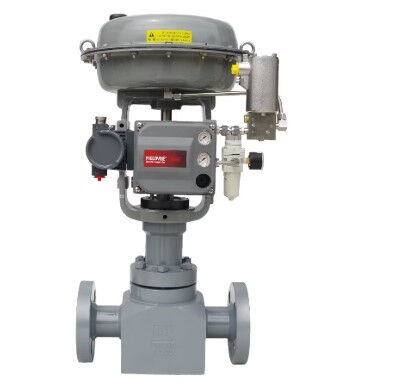Key Issues in High Differential Pressure Control Valve
On this page
High differential pressure control valves are critical in industrial systems, especially in high-pressure environments like boilers and steam pipelines. When designing these control valves, it's essential to consider several factors to ensure their reliability and stability. Common problems like vibration, noise, valve seat leaks, and wear can not only affect performance but also shorten the valve's lifespan. Let's break down these problems and explore how to tackle them.
In high-pressure differential environments, vibration and noise are significant concerns for control valve performance. Boilers and other industrial equipment, which often start and stop, can create varying levels of vibration and noise. Here's why these issues happen.
Thermal Expansion and Contamination: Boilers and pipes expand when heated. Contaminants like soot and solid particles can get into the valve, damaging the valve seat and causing leaks. This leads to faster wear on internal parts and the valve body.
Misaligned Guide Gaps: If the guides are off-center, it can cause vibrations and mechanical stress. As the stress increases, the vibration gets worse, potentially leading to valve failure.
Unstable Valve Stem: The stability of the valve stem head is directly linked to how smoothly the valve opens and closes. If the stem head is unstable, it can create uneven forces, increasing friction and vibration. This affects the valve's control precision.
Inadequate Actuator Rigidity: If the actuator is too flexible, it can cause longitudinal vibrations, which lead to noise.
To solve these problems, valve designs need to be optimized. Strengthening the valve stem's stability, improving actuator rigidity, and selecting better sealing and wear-resistant materials are key steps. Additionally, ensuring the guides and parts are precisely aligned will help reduce vibration and noise.
Cavitation and flashing are common problems that cause vibration and noise, especially in liquid and gas media. Here's how they play out.
Cavitation occurs when the pressure drops below the liquid's vapor pressure, forming bubbles that collapse and create shock waves. This happens mainly at the throttling part of the valve, where the bubbles' impact can severely damage the valve components. Even using high-strength materials won't prevent the wear from cavitation. A common fix is to inject nitrogen into the throttling area to dissolve the bubbles and reduce their impact on the valve.
Flashing happens when liquid passes through the valve, experiencing a rapid pressure drop that causes part of the liquid to turn into vapor. This creates high-speed flashing fluid that acts like sandblasting, damaging the valve's metal parts. Flashing often happens when the valve inlet is near saturation. The valve's sealing surfaces are especially vulnerable. To combat this, use materials that are resistant to flashing wear, such as Cr-alloy steels, and apply surface hardening treatments.
To reduce flashing damage, valves can be designed with specific features like diversion structures to prevent flashing gases from hitting the valve seat directly.
Throttling noise comes from shock waves generated when fluid flows through a throttling port. When fluid speed changes rapidly and pressure drops sharply, shock waves form, which convert into noise and vibration. The strength of throttling noise depends on factors like fluid type, flow rate, pressure drop, and valve position. To cut down on throttling noise, valves with special designs like reverse-flow angle valves can be used to help dampen the vibration and noise caused by flashing.
In systems like boilers, superheaters, reheaters, and steam pipelines, solid particles (like oxides) can break off and flow into the control valve. These particles can stick to the valve seat, cause cavitation in narrow gaps, or lead to wear. To protect against solid particle damage, here's what can be done.
Protective Structures for Solid Particles: A throttling sleeve guide structure can help prevent solid particles from entering the valve seat when the valve closes, avoiding direct impact.
Designing for Solid Particle Impact: The valve stem head can be designed with a flow-diverting structure that helps guide the particles away from the valve plug's sealing surface. Adding steps to the valve seat can further reduce the impact of particles on the sealing surface.
Designing high differential pressure control valves comes with its share of challenges, especially when it comes to vibration, noise, cavitation, flashing, and solid particle wear. To address these issues, designers need to carefully choose materials and structures based on the media and working conditions. Wear-resistant materials, surface hardening treatments, and specialized guide structures can significantly improve the valve's durability and performance. Properly designing sealing surfaces and diversion structures is also key to reducing vibration and noise, as well as improving the valve's overall function. By applying these strategies, we can ensure that high differential pressure control valves perform reliably, safely, and stably over the long term.

